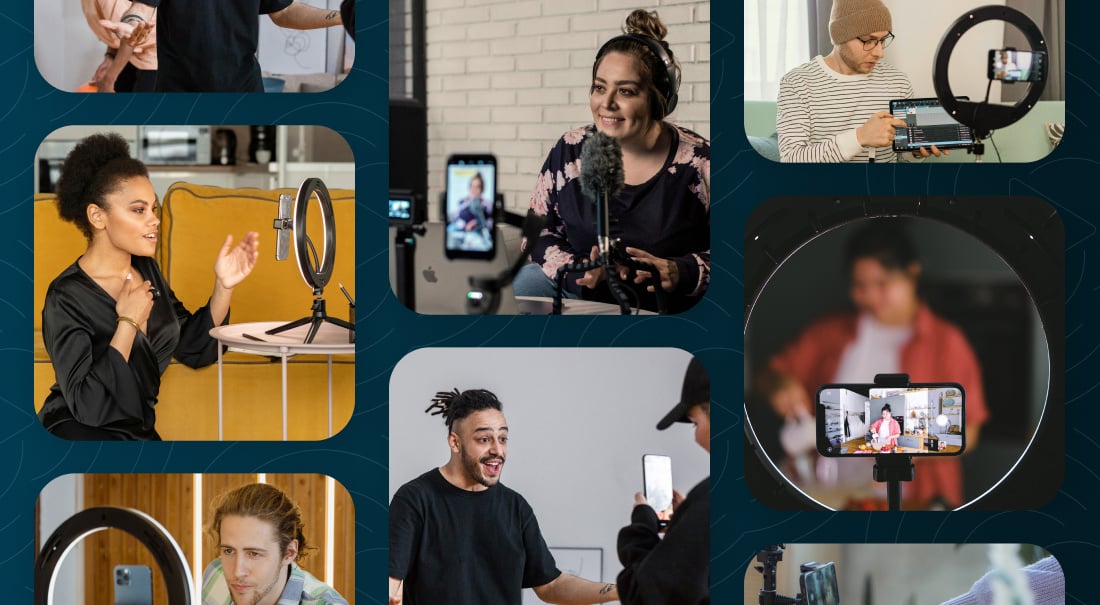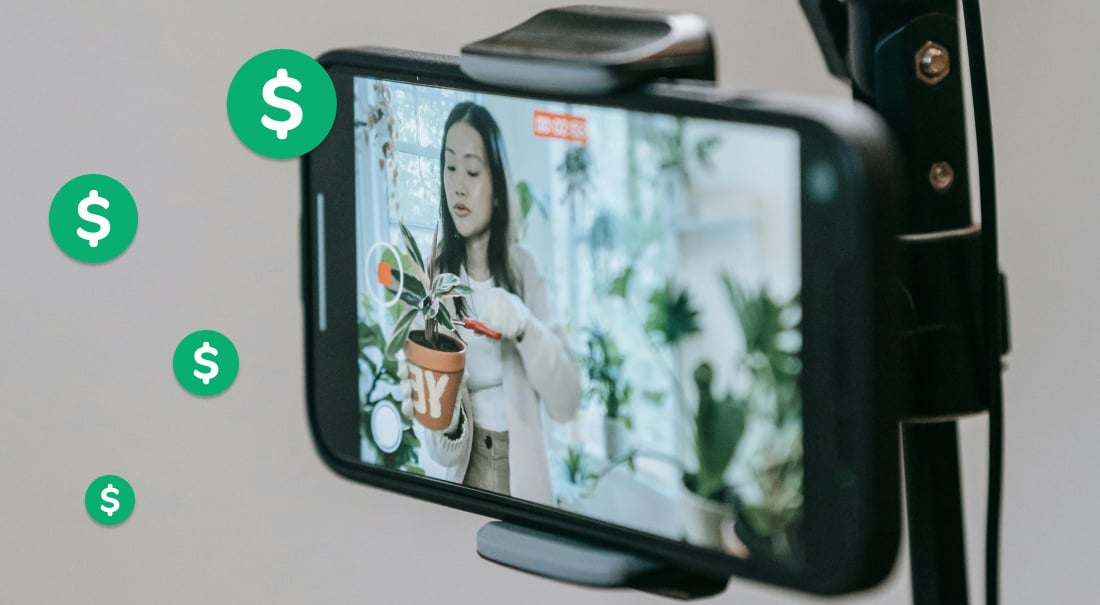
It’s 2024, and the ways in which we consume content are constantly evolving. It follows that content marketing as a field is also constantly evolving!
And while it might be a bold statement, based on trends in marketing, tech, and consumer behavior, we think it’s fair to say that video is the future of content marketing.
So what does that mean — especially for content marketers?
What is content marketing?
Let’s start by clarifying what “content marketing" actually is, so we have context for why video content is so important in 2024.
Content marketing is a long-term marketing strategy focused on attracting and engaging customers by creating and distributing valuable content.
That’s a simple definition for a broad (and ever-expanding) field.
What does content marketing look like?
In the digital space, content marketing efforts are targeted, and populate the marketing funnel, guiding customers through stages of awareness, consideration, and conversion.
That can include a range of content types, such as blog posts, website content, emails, infographics, white papers, and so on.
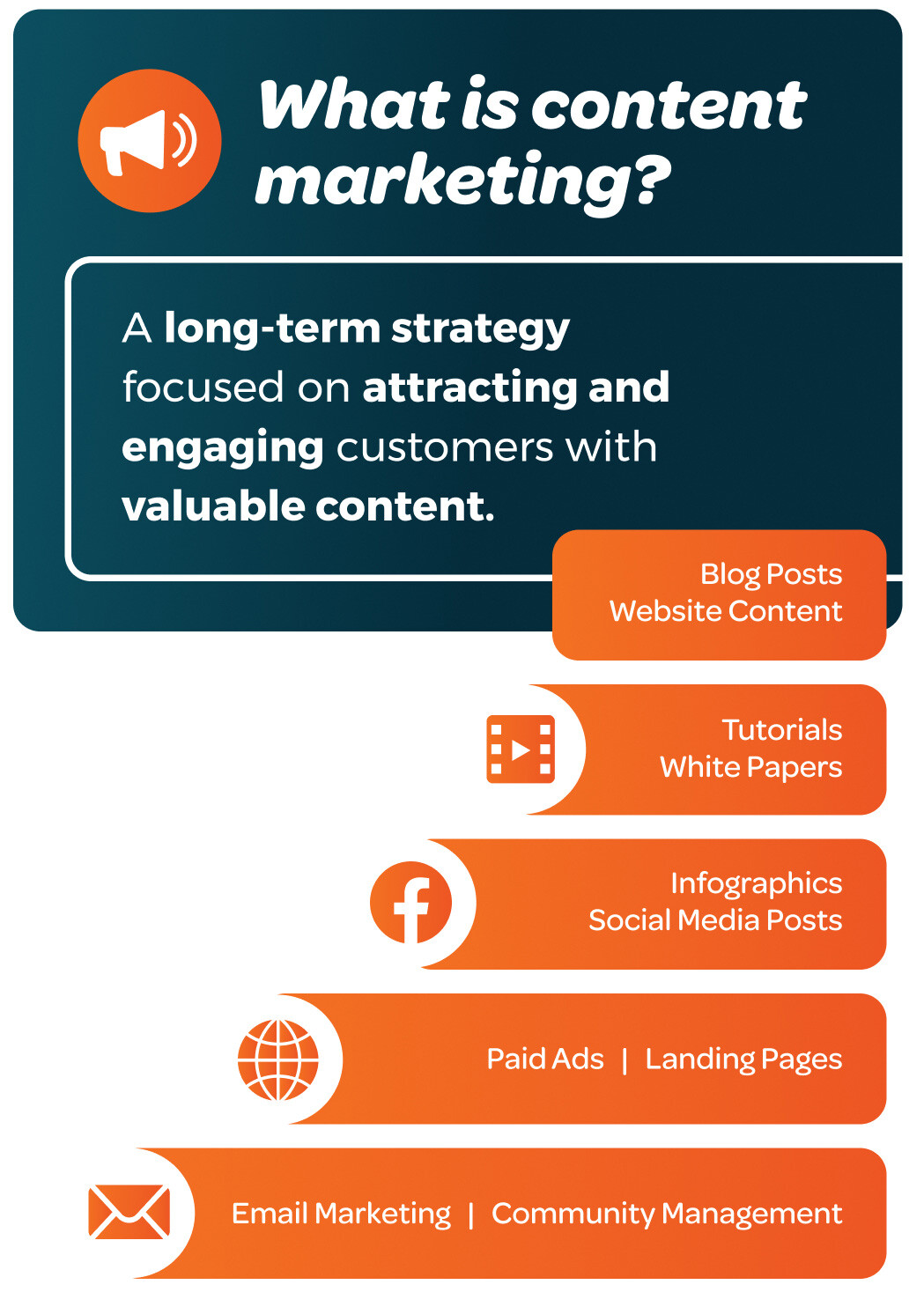
Most often the goal of content marketing is to anticipate and answer potential customer questions, attracting and engaging without being overt.
This is why SEO, or search engine optimization, is such a vital part of content marketing strategy: Content marketers seek to anticipate the questions and intentions of their target audience.
💡 Think: a blog post answering a Google search.
Then, smart content marketers give their new, awareness-stage audience the option of continuing to engage with the brand.

Permission and interruption marketing
This approach is why the term “content marketing” often overlaps with the term “permission marketing.” Permission marketing refers to the marketing efforts in which the audience opts in to receive marketing content.
💡 Think: signing up for an email newsletter.
You can contrast permission marketing with “interruption marketing" approaches, which is an approach that seeks to, you guessed it, interrupt the target audience with advertising.
💡 Think: billboards, commercials, and telemarketing.
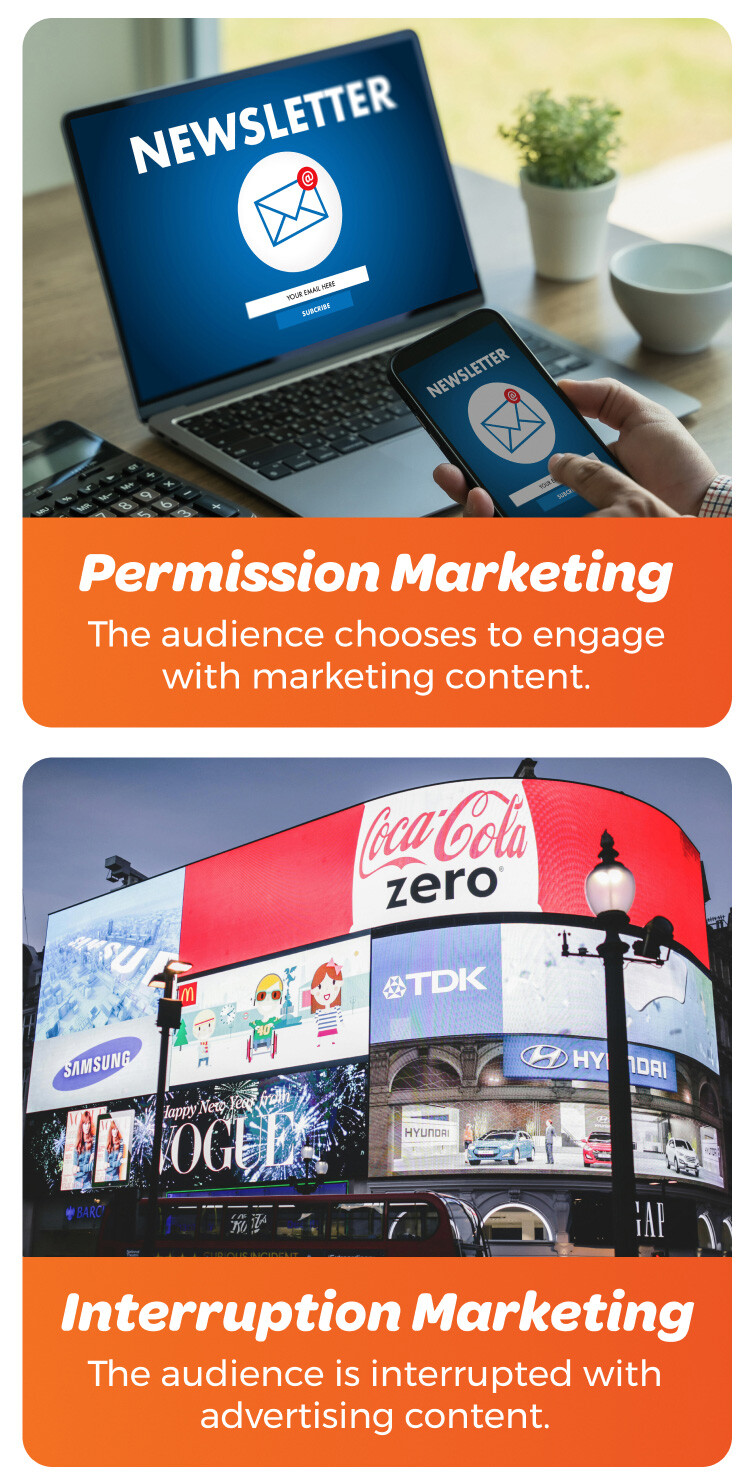
Interruption marketing approaches cast a wide net and can yield dramatic immediate results, especially when it comes to brand awareness. However, results can be short-lived, and generally, these methods are much more expensive for the marketer.
So why is video the future of content marketing?
Now that we get why content marketing is unique, why is video the future of content marketing? There are a few reasons.
1. Video is more effective for conveying information than text alone
We all love a good long-form educational article (... right?), but when it comes to information-rich content, video may be the superior format.
This is because:
Video supports information processing
Human beings like visual learning — it’s science! We simply process visual information faster than text information.
⚡ Way faster. ⚡
60,000 times faster, to be precise. And, 90% of the information transmitted to the brain is visual.
So whether you’re telling a story or creating a tutorial, a video is probably a more effective content format than text alone.
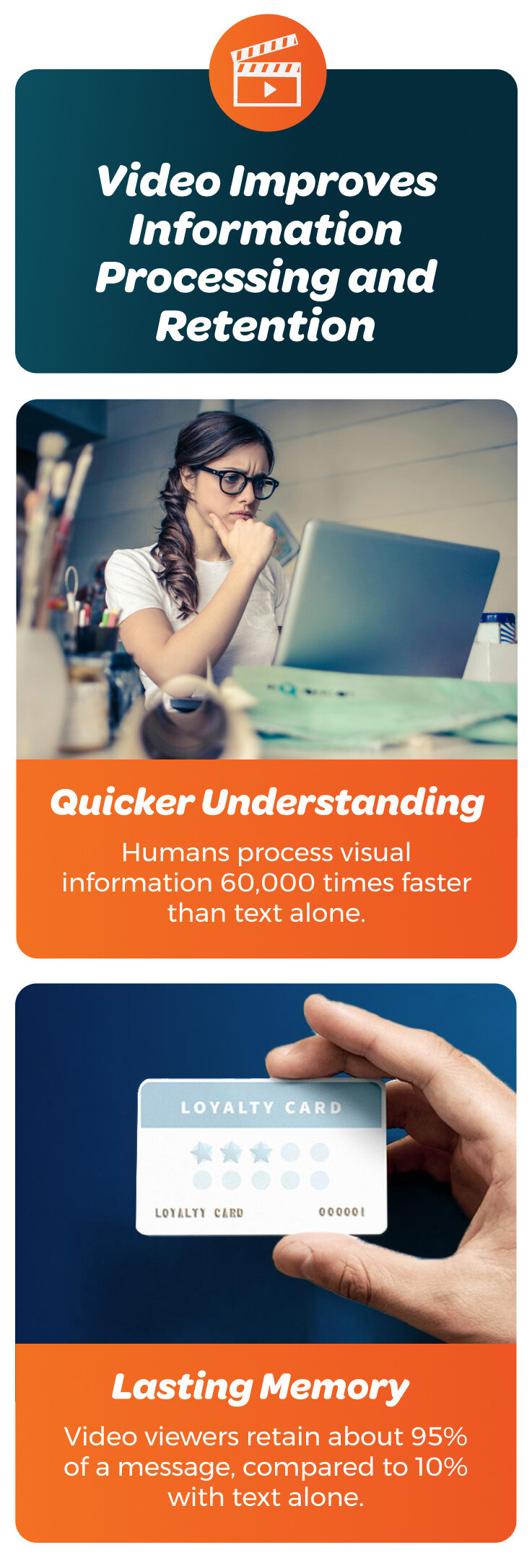
Video improves information retention
Visuals don’t just increase the speed at which your content is consumed and understood. Visuals also improve the likelihood of your message being remembered by your audience. When you’re driving content marketing initiatives like brand awareness, and building an audience over time, this is extremely important.
When your customers watch video, it’s estimated they retain about 95% of a message. Compare that to only 10% when reading text alone, and it’s clear why a video format is ideal for content marketing.
Many audiences simply prefer learning from video
According to recent surveys, over 90% of consumers have watched an explainer video to learn about a product or service. Even more telling, 44% of consumers say they prefer to watch a short video over other content types, like e-books, infographics, articles, and webinars.
This audience preference for video content is one of the most compelling reasons why (especially for small and growing businesses) video is the future of content marketing.
2. Video inspires emotion
Great content marketing isn’t just about conveying information — it’s also about inspiring emotion. No matter how informative your content may be, audience perceptions and decisions are driven by emotional responses.
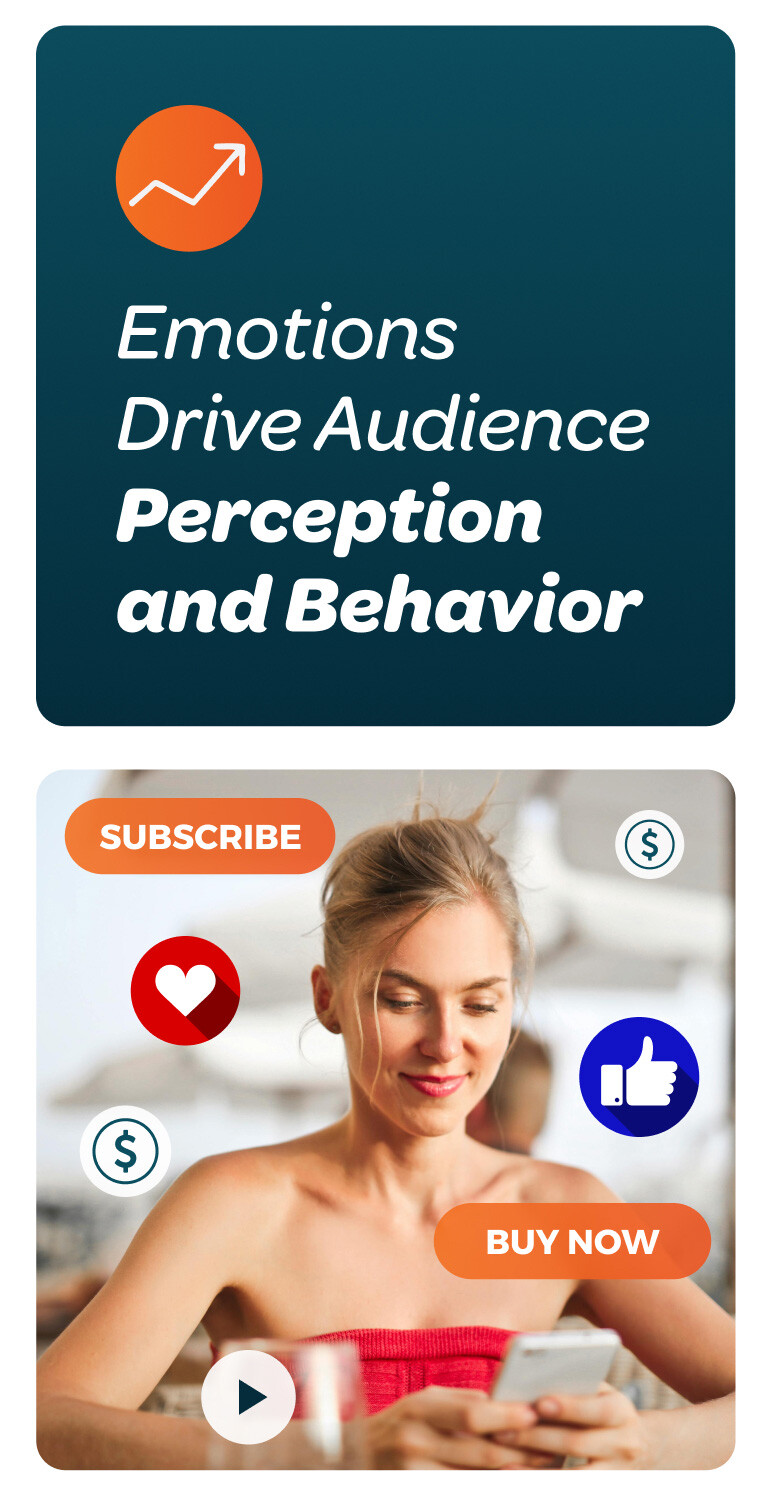
Creating content that makes your audience feel something comes down to good storytelling. When done successfully, audiences feel more connected, more motivated, and more likely to share your content.
📈 Plus, positive emotional associations inspire brand loyalty, so your audience can continue to grow.
In the same way that a video format makes it easier to successfully share informational content, it’s a superior format for storytelling. That’s why an increasing number of marketers are turning to video to elicit emotional responses in their audience, injecting humor, personality, and meaning into their content.
3. Video increases brand visibility on every platform
Whether it’s embedded on your website or posted on social media channels, video formats dramatically boost reach and increase visibility. That’s because video is hands-down the most popular type of content online: Over 80% of global internet traffic consists of video views.
On social media
Is short-form content taking over? In the world of social media, all signs point to “yes.” For marketers, short-form video is well worth the effort: Incorporating video into your social media content strategy can help your brand get spotted.
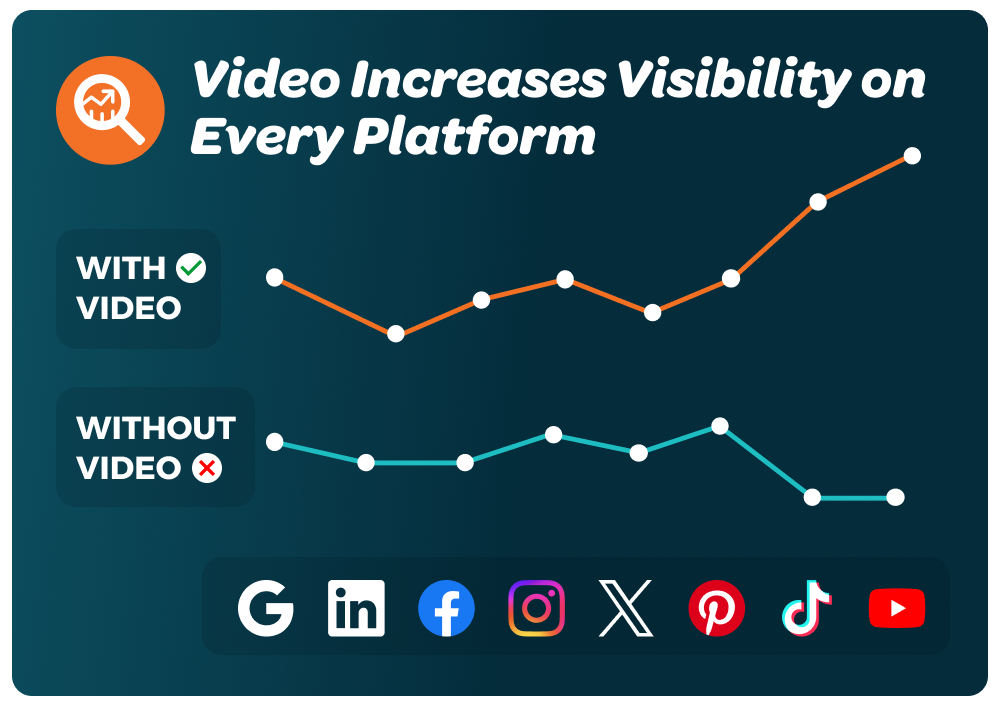
Most social media algorithms prefer video content because most social media users prefer video content. From improving your interaction rate on Facebook to dramatically increasing retweets, videos boost post performance across social media platforms, ensuring more people discover your content organically.
Brand awareness is also boosted when informational videos are optimized for search: YouTube is a powerful search engine with a huge number of users, and survey data shows that younger generations are increasingly likely to use social platforms like TikTok as their primary search engine.
On your website
Speaking of search engine optimization, embedded video can help your website content rank higher. Video can improve your keyword rankings, as well as decrease bounce rate and increase dwell time. These metrics signal to Google that users are finding your content valuable, so it’s more likely to appear in search results.
TL;DR: No matter where you’re focusing your digital marketing strategy, video boosts visibility.
4. Video seriously improves website performance
For content marketers, driving traffic to your website is priority number one. Priority number two? Making sure your site visitors find enough value in your content to convert, whether that’s joining the mailing list or trialing your product or service.
No surprise here: Including video content on your website supports both of these goals, plus more.
If you’re thinking “video will never replace SEO-rich website content ...” that’s probably true.
But while long-form, keyword-rich content can certainly help drive website traffic, a big block of text that looks like an academic paper can be overwhelming and off-putting to site visitors.
It can also cause your audience to miss key pieces of information, since studies have shown that site visitors usually only read about a quarter of the text on any given page.
That means content marketers working on long-form content need to get creative to keep site visitors from bouncing.
The most effective digital marketing strategies employ a variety of content formats so messaging is easy to consume, understand, and remember.
That can mean adding infographics to a blog post, embedding a video in your webpage header, or creating social media content that caters to dwindling attention spans.
Written content is great, video makes it even better.
5. Video improves conversion rate
We’ve already looked at some of the ways in which video formats improve content marketing efforts. Increased engagement, better information processing and retention, and more visibility — it follows that better content leads to better content results.
Video has also been shown to boost conversion rates (one of the most important KPIs for content marketers) across channels.
On landing pages
- Step one: An ad or email enticing enough to click.
- Step two: A landing page that inspires action.
Including video on your landing pages has been shown to dramatically improve conversion rates. Many claim that adding video to a landing page can increase conversions by over 80%, and nearly 40% of marketers say that video is the most important element of a landing page when it comes to impacting conversion rates.
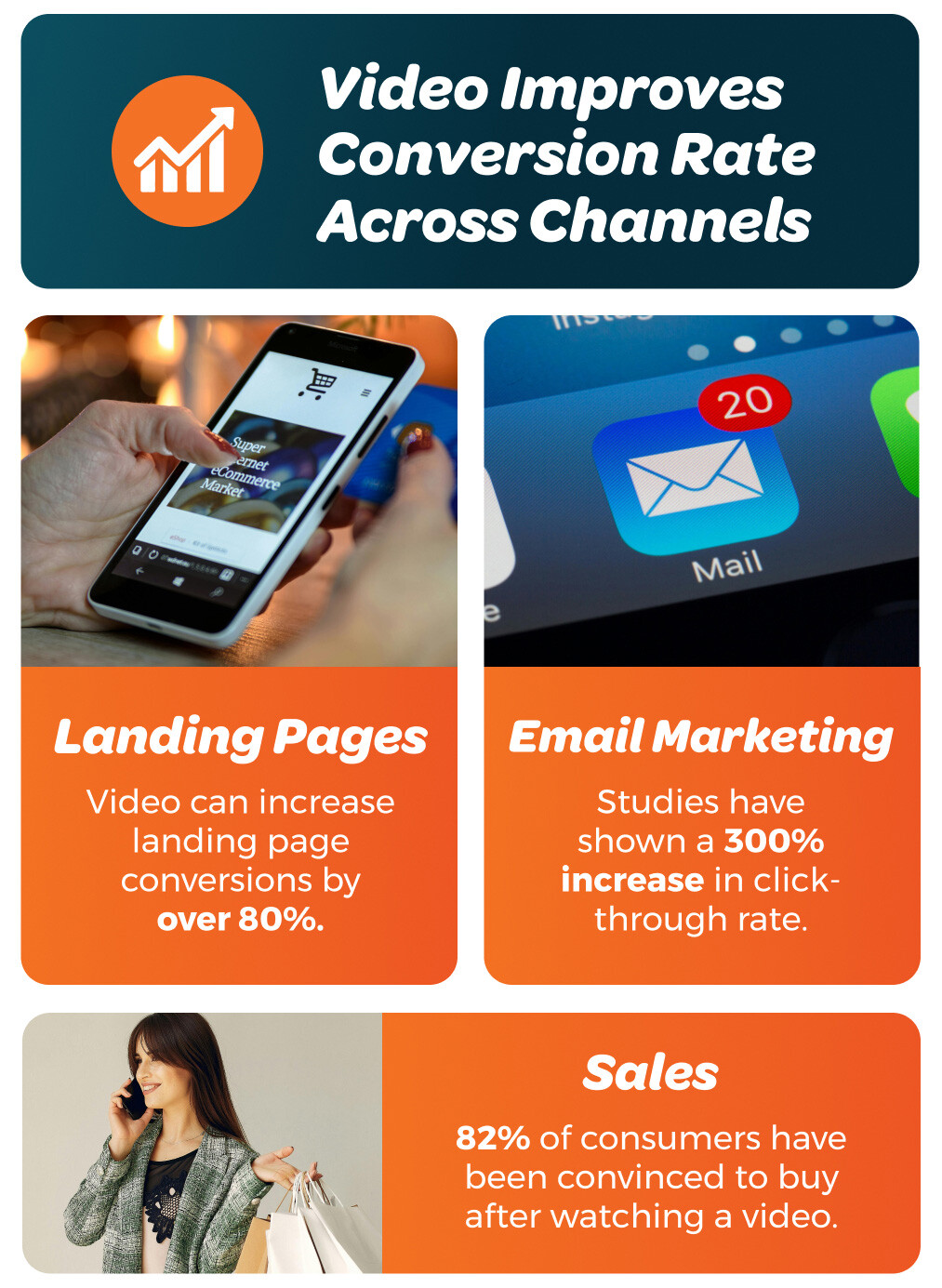
In email marketing
Email continues to be one of the most effective content marketing channels in 2024. The potential for segmentation and personalization means it’s easier to reach the audience most likely to find value in, and act on, the content you create.
Video helps here too, with some past studies reporting up to a 300% increase in click-through rate on emails with embedded videos.
Driving sales
Nowadays, online video is simply part of the shopping experience. Surveys consistently show that the vast majority of consumers both seek out videos to learn about products and services, and take action after watching those videos.
Is video content growing?
The core of content marketing isn’t changing. As a digital marketing strategy, content marketing efforts will still focus on awareness, lead generation, and loyalty — attracting and growing audiences. This will still be achieved through the creation of valuable content and potent storytelling.
What is changing? More content marketers are seeing the value of utilizing a range of content formats to support those efforts.
We already know that video is more effective than text alone at conveying information, eliciting emotion, increasing brand awareness, improving website performance, and boosting conversion rate — so it’s easy to see why many are saying that video is the future of content marketing.
So, is video content growing? Definitely — but that’s not to say that video should be your only content marketing format. Some content is better suited to articles, infographics, or live classes. However, offering different format options is the best way to ensure that the majority of your audience can engage with your content.
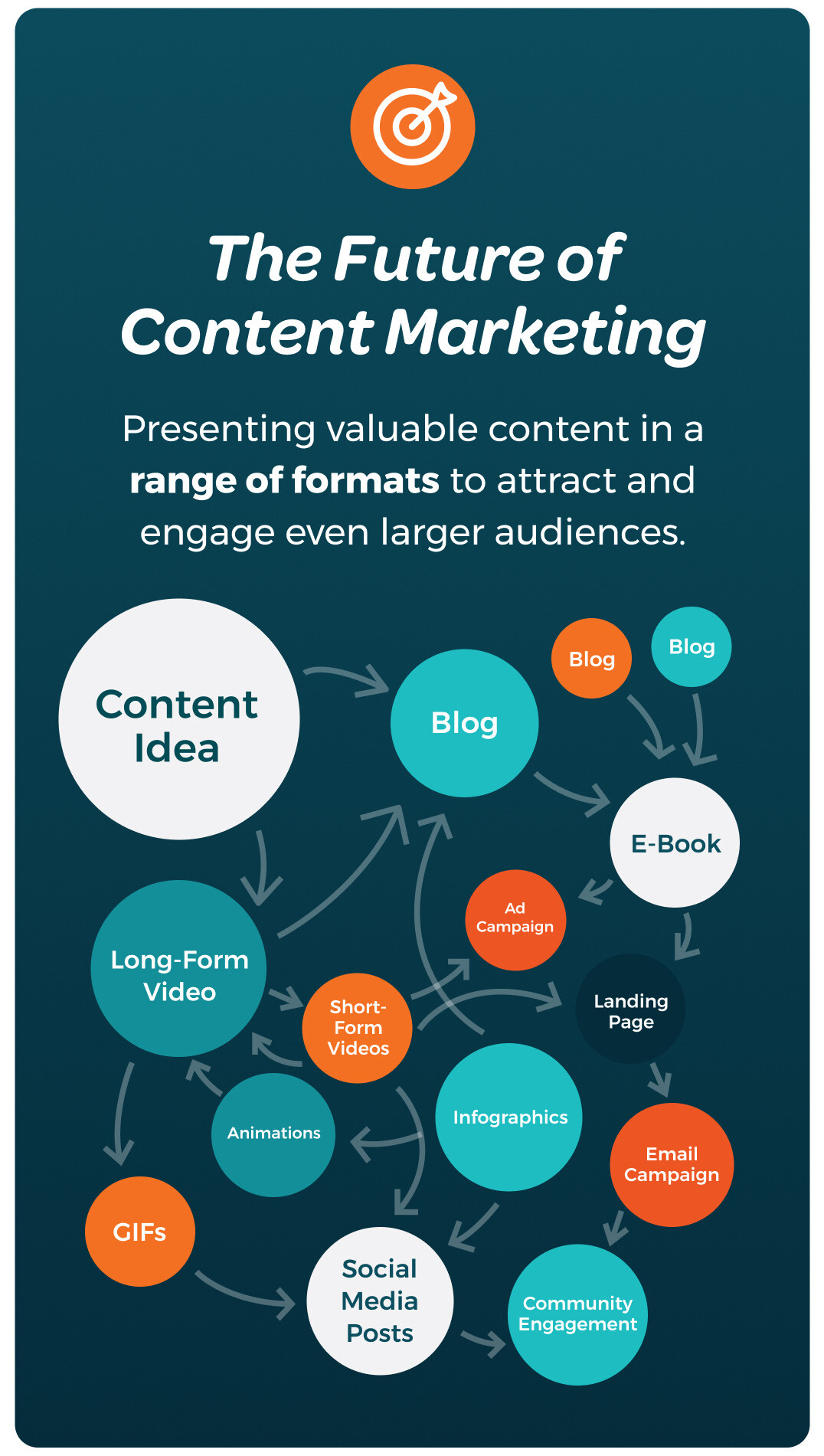
The future of video technology: Simplified production, incredible results
Create more video content (video content that’s more professional, more dynamic, and more effective) with less effort. Then take that content farther with integrated Multistreaming, video hosting, and video monetization tools.
From livestreams to short-form and everything in between, Switcher is simplifying the business of video. See how easy it is when you try Switcher free for 14 days!
Subscribe to the blog
Sign up to receive notifications whenever a new blog post is published. You may unsubscribe at any time.

Share
About the Author

Maddie is a writer and curious content marketer with experience in nonprofits, advertising, and tech. As Switcher’s content strategy manager, she’s passionate about connecting with our audience through content that educates and inspires.
All posts by Maddie Tong


